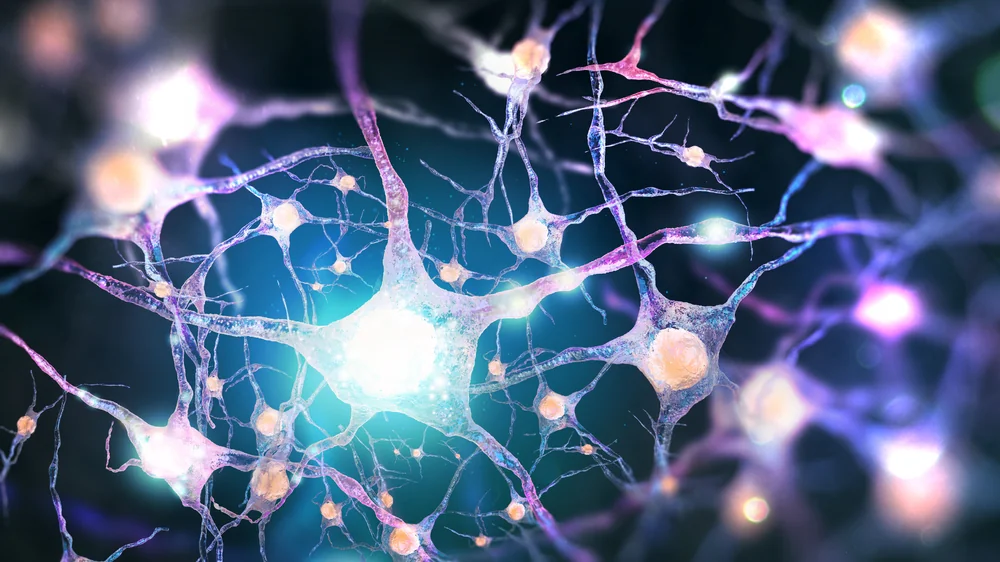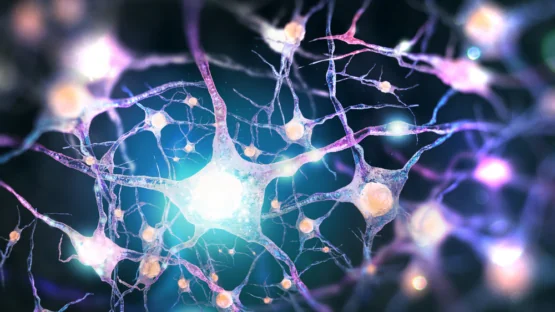Researchers at Gladstone Institutes in San Francisco report that a gene variant associated with Alzheimer’s works differently in mice and humans, and they also demonstrate how modifying this gene could potentially prevent the plaques associated with Alzheimer’s from forming and damaging the brain[1].
An ApoE4 gene variant is associated with Alzheimer’s disease
The gene apolipoprotein E3 (ApoE3) has a variant known as ApoE4, which is associated with the development and progress of Alzheimer’s disease. People with just one copy of the ApoE4 gene are at twice the risk as people without this gene variant. Some people even have two copies of the ApoE4 gene, which makes their risk of Alzheimer’s a staggering twelve times greater.

Both the ApoE genes produce their own forms of ApoE protein, which differ in structure. The ApoE4 protein is fragile and fragments because it cannot function in the same way as the regular ApoE3 protein in human nerve cells. These fragmented protein pieces are associated with the increased production of amyloid-β peptides and tau phosphorylation that are typical of Alzheimer’s disease.
The researchers wanted to find out how ApoE4 is linked to Alzheimer’s disease. They considered the possibility that the increased amyloid-β and tau phosphorylation from the fragmentation of ApoE4 drives disease progression. Another possibility involved the negative consequences of a lack of ApoE3 proteins, as they were replaced by the ApoE4 variant. The team also considered a combination of both of these possibilities.
The team investigated these potential answers by examining the effects of ApoE3 and ApoE4 on human nerve cells. Neurons were created by using pluripotent stem cells taken from volunteers who had either two copies of ApoE3 or two copies of the ApoE4 gene, and the researchers programmed these cells to become the desired type of neuronal cell.
The team compared the ApoE3 and ApoE4 neurons against neurons that were unable to produce either type of the ApoE protein. They discovered that neurons that produced no ApoE protein worked the same as those that produced ApoE3. This confirmed that it was not a lack of ApoE3 causing the problem but that ApoE4 protein alone was linked to Alzheimer’s disease.
This finding also sheds light on why treatments for Alzheimer’s that work in mice fail to translate to humans. The production of amyloid-β in mice is not influenced by ApoE4; this means that treatments that prove effective in mice may not work in humans, as the mouse models of the disease do not emulate the ApoE4-related form of Alzheimer’s that humans get. However, therapies that focus on reducing amyloid-β have worked in mice[2], so while ApoE4 functions differently in mice and humans, this is not the full story of Alzheimer’s. This research does, however, clearly show a way in which mouse models differ from humans, helping to guide future research.
Converting ApoE4 to ApoE3
The results of the study suggest that therapies that seek to modify the ApoE4 gene protein before it fragments might be a way to combat Alzheimer’s. This is how traditional medicine would generally approach the problem, treating the symptoms and not the cause.
However, the researchers took this one step further to a far more robust solution. Rather than simply attempting to treat the consequences of having an ApoE4 gene producing sub-par proteins, they completely removed the problem by using gene therapy to edit the genes and convert them from ApoE4 to ApoE3.
The converted genes ceased to produce the unstable ApoE4 protein and produced the stable ApoE3 version of it instead. This served to correct the problem at the root rather than trying to slap a band-aid on the consequences.
Conclusion
With so many failures to combat Alzheimer’s disease, it is easy to become disillusioned. We have seen mice cured of the disease numerous times, but these cures have failed to translate to humans. These new findings help to progress knowledge in the field and offer potential new ways to defeat Alzheimer’s.
What is refreshing about this study is how the researchers have opted to attack the problem at the root cause: the production of misfolded proteins that lead to the progression of the disease. It is becoming ever more clear that if we are going to make progress on ending age-related diseases, we must target the aging processes themselves, which cause these diseases.
Literature
[1] Yuang, Y. et al. (2018) Gain of toxic apolipoprotein E4 effects in human iPSC-derived neurons is ameliorated by a small-molecule structure corrector. Nature Medicine doi:10.1038/s41591-018-0004-z
[2] Hu, X., Das, B., Hou, H., He, W., & Yan, R. (2018). BACE1 deletion in the adult mouse reverses preformed amyloid deposition and improves cognitive functions. Journal of Experimental Medicine, jem-20171831.




